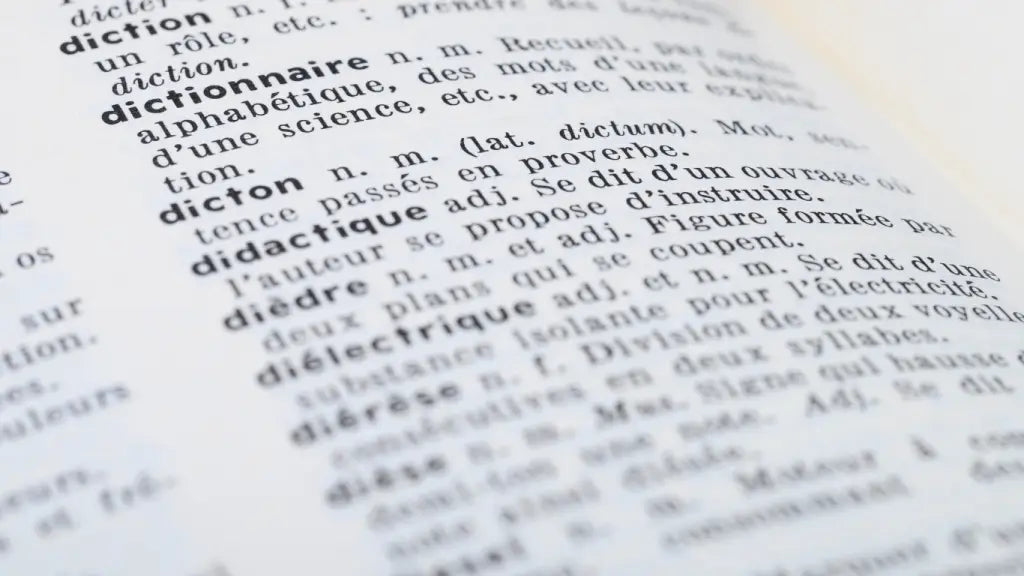
Unlocking the Language of Movement: A Dictionary of Dance Terms
Dance is a universal language that transcends borders and cultures. Within the world of dance, there exists a rich and diverse vocabulary that dancers use to communicate and express themselves. Whether you're a seasoned dance enthusiast or someone just starting their dance journey, having a dictionary of dance terms can enhance your understanding and appreciation of this art form. In this blog, we'll explore a comprehensive guide to some key dance terms across various dance styles.
Ballet Terms:
- Arabesque: A pose in which the dancer stands on one leg while extending the other leg straight behind them.
- Plie (plee-ay): A bending of the knees. There are two types: demi-plié (half bend) and grand plié (full bend).
- Chassé (sha-SAY): A step in which one foot literally chases the other out of its position.
- Pas de Deux (pah duh DUH): A dance for two, often used in classical ballet to showcase the skills of a male and a female dancer.
- Grand Jeté (zhah-TAY): A large jump in which the dancer throws one leg forward and the other backward while in the air.
Jazz Terms:
- Pirouette (peer-oo-ET): A controlled spin or turn on one leg.
- Jazz Hands: A stylized hand movement often associated with jazz dance, involving the spreading and shaking of the fingers.
- Kick Ball Change: A quick change of weight from one foot to the other, often accompanied by a kick.
- Isolation: The ability to move one part of the body independently of the rest, often seen in jazz dance.
- Fouetté (fweh-TAY): A term meaning "whipped," it describes a quick whipping movement of the working leg.
Modern Dance Terms:
- Contract and Release: A movement approach that involves contracting and releasing different parts of the body.
- Fall and Recovery: A choreographic technique in which dancers intentionally lose their balance and then recover.
- Graham Technique: Developed by Martha Graham, this technique emphasizes the use of the core and breath in movement.
- Spiral: A twisting movement of the body, often seen in modern dance.
- Improvisation: Creating movement spontaneously without predetermined choreography.
Tap Dance Terms:
- Shuffle: A basic tap dance movement involving a quick brush of the foot followed by a tap.
- Time Step: A series of steps and sounds that keep time with the music.
- Buffalo: A traveling step in which the dancer crosses one foot over the other, creating a crisscrossing motion.
- Wings: Rapid tapping of the toes while the heel stays in contact with the floor.
- Pull Back: A quick movement of the foot away from the floor, followed by a tap.
Hip Hop Terms:
- Breaking: A style of street dance that originated in the Bronx in the 1970s, involving acrobatic moves and footwork.
- Locking: A funk dance style characterized by freezing in a particular position before moving again.
- Popping: A dance style that involves quick contractions and releases of the muscles to create a popping or jerking effect.
- Top Rock: A series of steps performed from a standing position in breakdancing.
- C-Walk (Crip Walk): A hip hop dance style associated with West Coast hip hop culture, known for its footwork patterns.
Latin Dance Terms:
- Salsa: A lively dance form with origins in Latin America, characterized by energetic footwork and hip movements.
- Rumba: A slow and romantic dance style originating from Cuba, often performed with a partner.
- Cha-Cha-Cha: A lively dance style with quick footwork, originating from Cuba.
- Samba: A Brazilian dance style known for its energetic and rhythmic hip movements.
- Merengue: A Dominican dance characterized by a simple marching step often performed in couples.
Contemporary Dance Terms:
- Lift: A movement in which one dancer raises another off the ground.
- Release Technique: A movement approach that involves the deliberate letting go of muscular tension.
- Contact Improvisation: A form of dance where points of physical contact provide the starting point for exploration.
- Crescendo: A gradual increase in the intensity or volume of movement.
- Floor Work: Movements performed on the floor, often involving rolling, sliding, or crawling.
Ballroom Dance Terms:
- Waltz: A smooth, progressive dance characterized by long, flowing movements.
- Foxtrot: A ballroom dance that combines slow and quick steps, known for its smooth and graceful style.
- Tango: A passionate and dramatic dance style originating from Argentina.
- Quickstep: A fast-paced ballroom dance characterized by lively steps and syncopated rhythms.
- Cha-Cha: A lively dance with quick footwork, originating from Cuba and often performed with a partner.
Conclusion:
Dance is a language of movement, and understanding the terminology enhances our ability to communicate and appreciate this art form. Whether you're a dance enthusiast, a student, or a curious observer, this dictionary of dance terms serves as a guide to the diverse and vibrant vocabulary that makes up the world of dance. So, next time you find yourself immersed in the beauty of a dance performance, you'll have the keys to unlock the language of movement and fully embrace the artistry before you.
ChatGPT can make mistakes. Consider checking important information.
